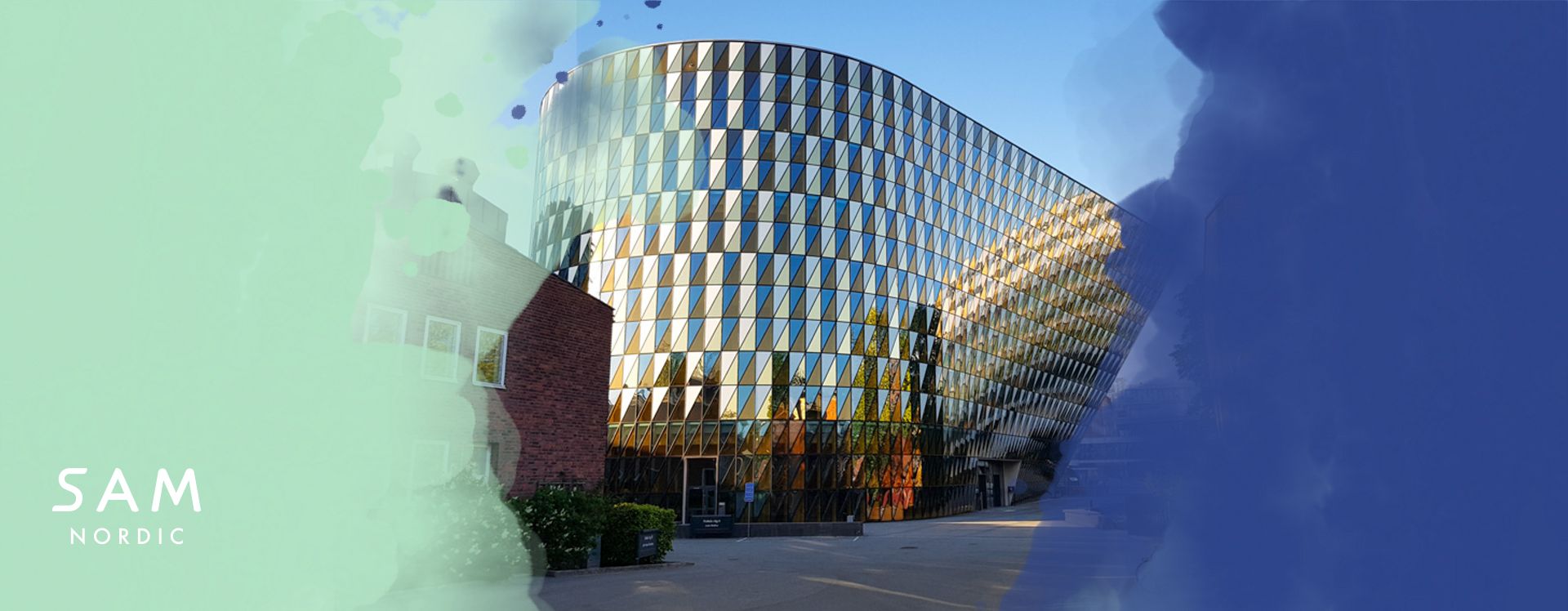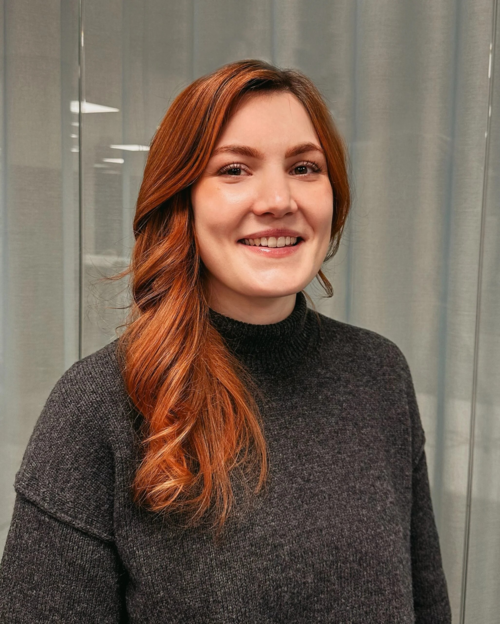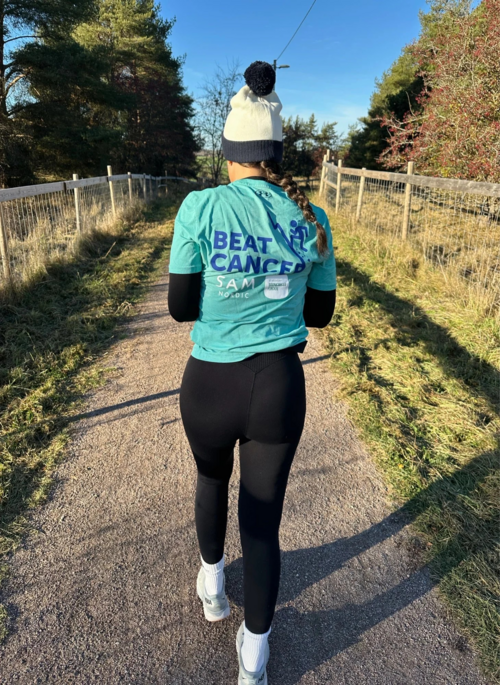SAM Nordic stories
This is where we share stories from our whereabouts, the issues we support and stand up for and also updates from our latest activities. We hope you will get to know us better and stay in the loop of what we are up to.
Hola, Barcelona and EANM!
EANM is always a blast, and this year marks its 40th anniversary. We have counted, and SAM Nordic has participated for over 25 years. Time flies, they say, and in this case, it sure is true. This is our team on-site during the congress. Make sure to grab one of them for a chat about easier and better access to radiopharmaceuticals in the Nordic and Baltic markets. That’s their favourite topic. ☢️
Sometimes, the smallest actions can make the biggest difference.
This spring, we turned our daily breaks into a source of hope for children battling cancer! Taking a short walk, each workday during the challenge, resulted in a donation of 100 SEK per walk and person to Barncancerfonden.
The main aim was the donation itself, but it also sought to boost colleagues' well-being during a busy work period. Did we succeed? We believe so.
In numbers:
✅ 100% co-worker participation
✅ 17 days
✅ 267 walks🚶♂️🚶♂️🚶♂️🚶♂️
✅ 26,700 SEK raised for tiny humans battling cancer
"Participating in this challenge was a wonderful way to contribute to a great cause while also caring for our well-being. It truly was a win-win!" - Annabel Kossov, Office Assistant at SAM Nordic.
This initiative has helped us develop a new habit that will lower our stress levels and increase our time outdoors, even if only briefly, each workday.
Why this mattered:
✅ Recharged our minds
✅ Boosted productivity
✅ Reduced stress
✅ Improved health
✅ Supported children fighting cancer
Our Steps Towards Reduced Carbon Emissions in 2024
For the Financial Year 2024, we’ve made a remarkable reduction from 2023, cutting our emissions close to half. In 2024, we have taken several actions to reduce our climate impact - this is how:
![]() Transport – We have optimised our logistics flows and switched to HVO100 for several transports, significantly reducing emissions.
Transport – We have optimised our logistics flows and switched to HVO100 for several transports, significantly reducing emissions.
![]() Digital Meetings & Train Travel – By prioritising digital meetings and opting for trains instead of flights, we have saved hundreds of kilos of CO₂e. One example: 12 hours of train travel to EANM in Hamburg saved approximately 800 kg of CO₂e.
Digital Meetings & Train Travel – By prioritising digital meetings and opting for trains instead of flights, we have saved hundreds of kilos of CO₂e. One example: 12 hours of train travel to EANM in Hamburg saved approximately 800 kg of CO₂e.
![]() IT Management – By sending back IT equipment we no longer use, we have saved over 1 tonne of CO₂e and given technology a new life.
IT Management – By sending back IT equipment we no longer use, we have saved over 1 tonne of CO₂e and given technology a new life.
![]() Procurement – Almost all suppliers have signed our Code of Conduct, strengthening our shared environmental responsibility.
Procurement – Almost all suppliers have signed our Code of Conduct, strengthening our shared environmental responsibility.
![]() Public Transport as a Benefit – We encourage our co-workers to travel sustainably by offering public transportation cards, and they are widely used.
Public Transport as a Benefit – We encourage our co-workers to travel sustainably by offering public transportation cards, and they are widely used.
Small steps together make a big difference, every gram of carbon dioxide counts. 💚
 ESG Analysis 2024 and our focus areas: ESG Analysis 2024
ESG Analysis 2024 and our focus areas: ESG Analysis 2024
Theranostics or theragnostics? – We find many names for those we love
This is our perspective on recent years’ debate regarding how to spell this fascinating word: “Theranostics” or “Theragnostics”? Both spellings have a long history of use. It is understood that both versions refer to the treatment strategy that combines therapeutics with diagnostics, and the word is derived from the Greek words therapia and diagnosis.
In our search for answers following the debate in recent years, we came upon an interesting article¹. We believe that Prof. George Babiniotis, Emeritus and Honorary Professor of Linguistics and former Rector (2000–2006) of the University of Athens, has excellent and credible thoughts. Our position is based on his reasoning. In the article, Prof. Babiniotis explains the following:
“Theragnostics is the better term. In theranostics, the second part of the word “nostics” refers more to the disease than diagnostics. Linguistically, the better approach is a synergy of the two words therapo-gnostics because “thera” alone does not refer to therapy and could be confused with the Greek word for hunting.”
Babiniotis argues that it is essential to understand that the key to the term “theragnostics” is “gnosis”, not “agnosis”, whereas “agnosis” is derived from the Greek word agnosia , which means a lack of knowledge. Thus, “theragnostics” is a better term emphasising knowledge, and as the article elegantly summarises “, nuclear medicine with its combination of molecular imaging and molecular radiotherapy does indeed offer knowledge-based precision medicine”.
Reference: ¹https://link.springer.com/article/10.1007/s00259-018-4204-z
World Theragnostics Day 2025
This marks the day when Dr Saul Hertz on March 31st, 1941, made history by administering the first radioiodine treatment at Massachusetts General Hospital. A groundbreaking moment in medical history! The word theragnostics is cool but also derived from the Greek words therapia and diagnosis. Pretty neat, right?
By bridging the gap between diagnosis and treatment, it’s paving the way for a paradigm shift in care of complex diseases such as cancer. The method has real potential in nuclear medicine, where radioactive isotopes are used for both diagnostic imaging studies and targeted treatment. That’s the beauty of theragnostics!
Theragnostics opens doors to more hopeful treatment for patients with complex diseases and are on the way to changing cancer care to be more tailored and patient-centered.
Not quite sure what theragnostics is all about? No worries, backed by 25+ years in nuclear medicine, we’re experts in the field. Here’s a quick crash course to fill in some knowledge gaps:
Theranostics or theragnostics?
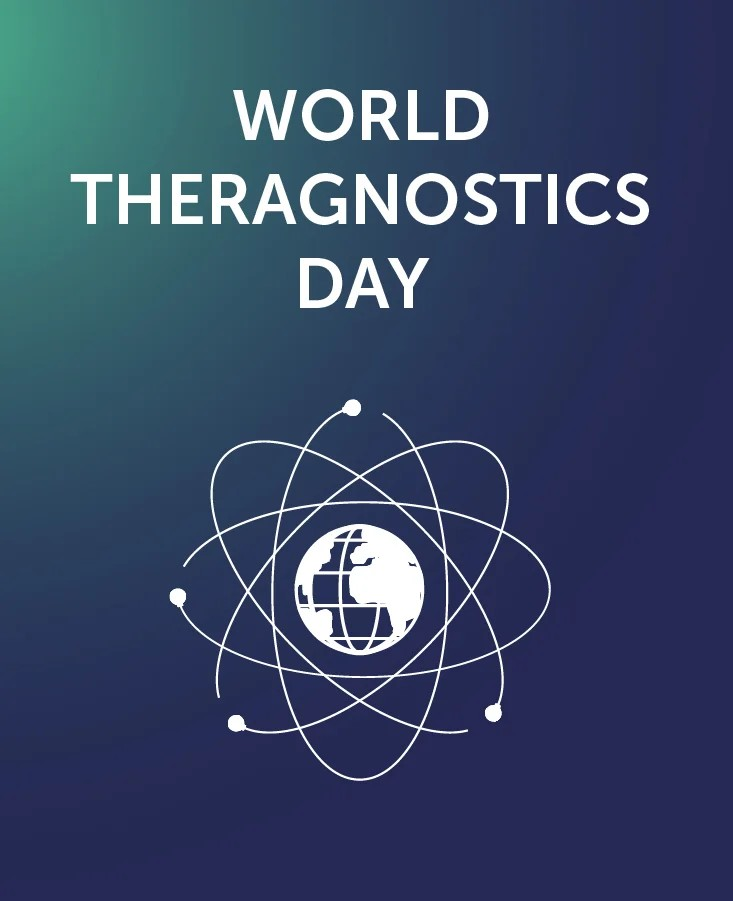
When one size does not fit all
We got a glimpse of the reality for skiers with disabilities. Try to keep the balance with only your hands and snowboarding without the help of your legs, or steer with a straw in your mouth. It gave us all great respect for the knowledge and drive these dedicated ski instructors and skiers possess. Regardless of how one gets down the slopes, we all agree it is a sport filled with speed and freedom for everyone.
One of our co-workers described the day like this:
“I hadn’t realised how much effort, innovation and money it takes to get everyone on skis. They are driven by commitment and passion that leads to inclusive skiing.’
And the incredible thing is that it is a non-profit organisation entirely dependent on external grants and partnerships to operate and develop.
Conventional ski rental can be tricky for everyone, but in Totalskidskolan’s case, it is another level of complexity. All the gear is customised, and depending on the skier, it will be adapted to fit the user of the day. The skier can choose and re-choose different equipment depending on the day’s preferences. It can also be a seat change, and the steering handles can be changed to levers or a crossbar handle or the ski can be changed to more or less a turning radius.
Some innovative equipment comes from Sweden, but development in cooperation with other countries is sometimes needed to customise the gear and functions.
We are incredibly proud to be partners with people who are enablers!
Or, as one of our co-workers explained:
“I am proud to work for a company that genuinely strives for inclusion and equality, and our collaboration with Totalskidskolan is a testament to that”.
Learn more about the organisation.

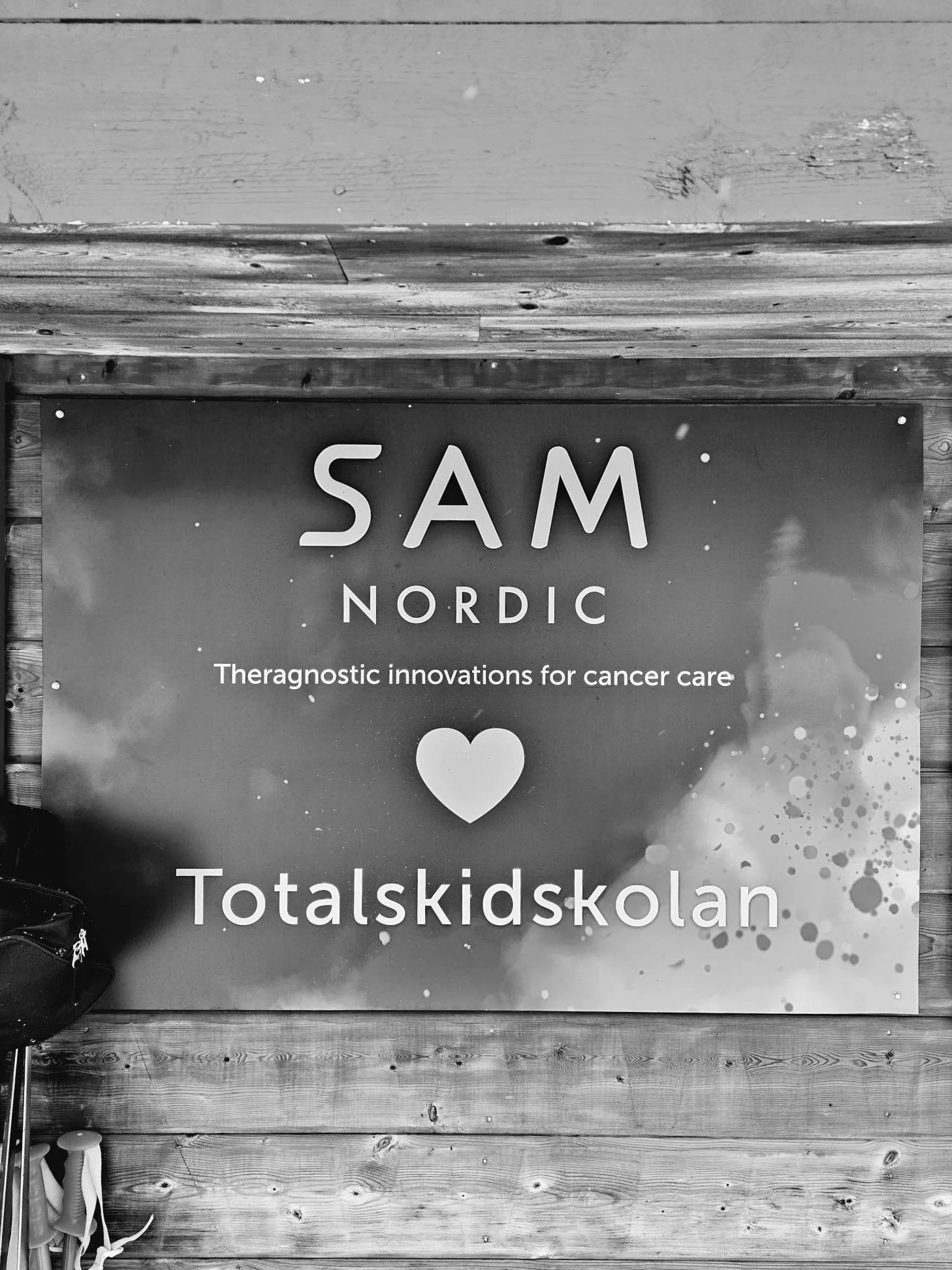
World Patient Safety Day
17 September marks the annual World Patient Safety Day, and this year, the focus is on enhancing diagnosis for patient safety.
As advocates for NET patients in the Nordic and Baltic countries, we at SAM Nordic want to highlight the importance of “Get it right, make it safe!”. World Patient Safety Day raises public awareness and fosters collaboration between patients, health workers, policymakers, and healthcare leaders to improve patient safety.
This year, the theme is “Improving diagnosis for patient safety”, with the slogan “Get it right, make it safe!” highlighting the critical importance of correct and timely diagnosis in ensuring patient safety and improving health outcomes.
More about this WHO day is found here: https://lnkd.in/eSNin93A
Source to the facts about NET: https://incalliance.org/
The road to Barncancerfonden
To celebrate this milestone, we laced up our running shoes and embarked on a symbolic journey, running from our Headquarters in Nacka Strand to the heart of Stockholm, where we presented the Foundation with a cheque. 💌
Our visit to Barncancerfonden was a testament to the real-world impact of our support. We were warmly received by their secretary general, Ola Mattsson, and had a productive session with Johanna Andrae, who enlightened us on their rigorous science grant selection process. 🔬🧪🧫👩🔬
We also had the privilege of listening to Jakob Stenman, a 100% committed Barncancerfonden researcher leading LuDO-N (https://clinicaltrials.gov/study/NCT04903899), a trial on children with primary refractory or relapsed high-risk neuroblastoma, a clear example of the direct impact of our contributions.💙☢👶👧🧒
🙏 A special thanks to Magnus Sjödin for making this a day we will remember for a long time.
Today, 85% of children survive, but childhood cancer remains a leading cause of death for ages 1-14 in Sweden. 😔🤍🕊️
Together, we strive for better prospects for children battling cancer while promoting health and motivation at work. 🏃🏃♀️🏃♂️🏃🏃♀️🏃♂️
#WeAreSAMNordic #MakingADifference #BeatCancer #ChildhoodCancerResearch #EmployeeEngagement #Hope #SAMNordic #csr #barncancer #delaordet
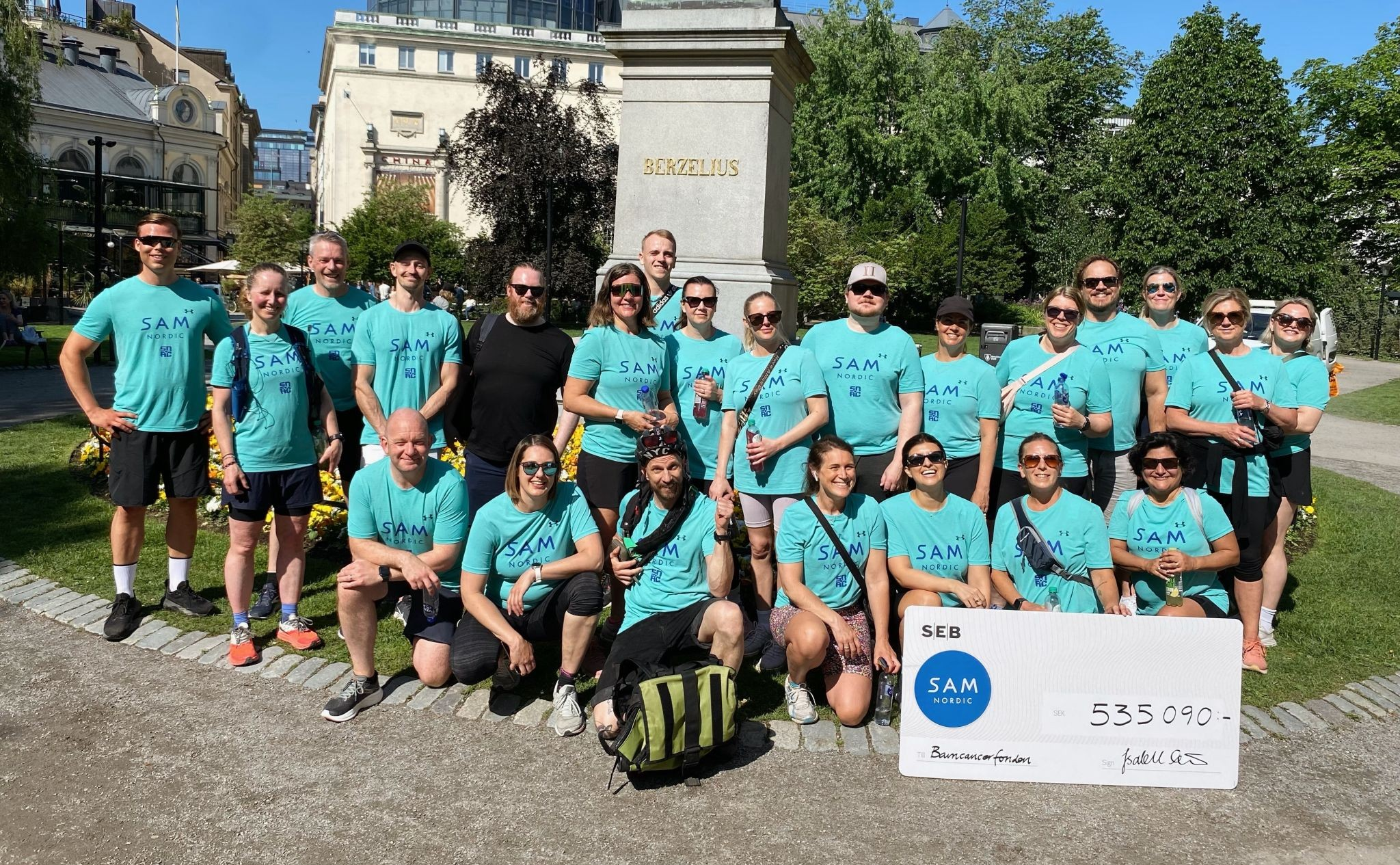
A theragnostics symposium in Uppsala
Theragnostics is a term used to describe when radioactive drugs are used as diagnostic and therapeutic pairs. Receptors that are overexpressed in the diseased tissue, e.g. tumors, are used to guide the drug to the target. The radiation can then either be used to for imaging or for therapy depending on the radionuclide used.
Theragnostics- the use of radiolabelled compounds for therapy and diagnosis.
The meeting is arranged by SciLifeLab. We especially look forward to listening to Prof. Richard P. Baum and getting insight into what is happening in Sweden's scientific field regarding theragnostics.
Read more about the meeting here: https://www.scilifelab.se/event/theranostics-the-use-of-radiolabelled-compounds-for-therapy-and-diagnosis/

